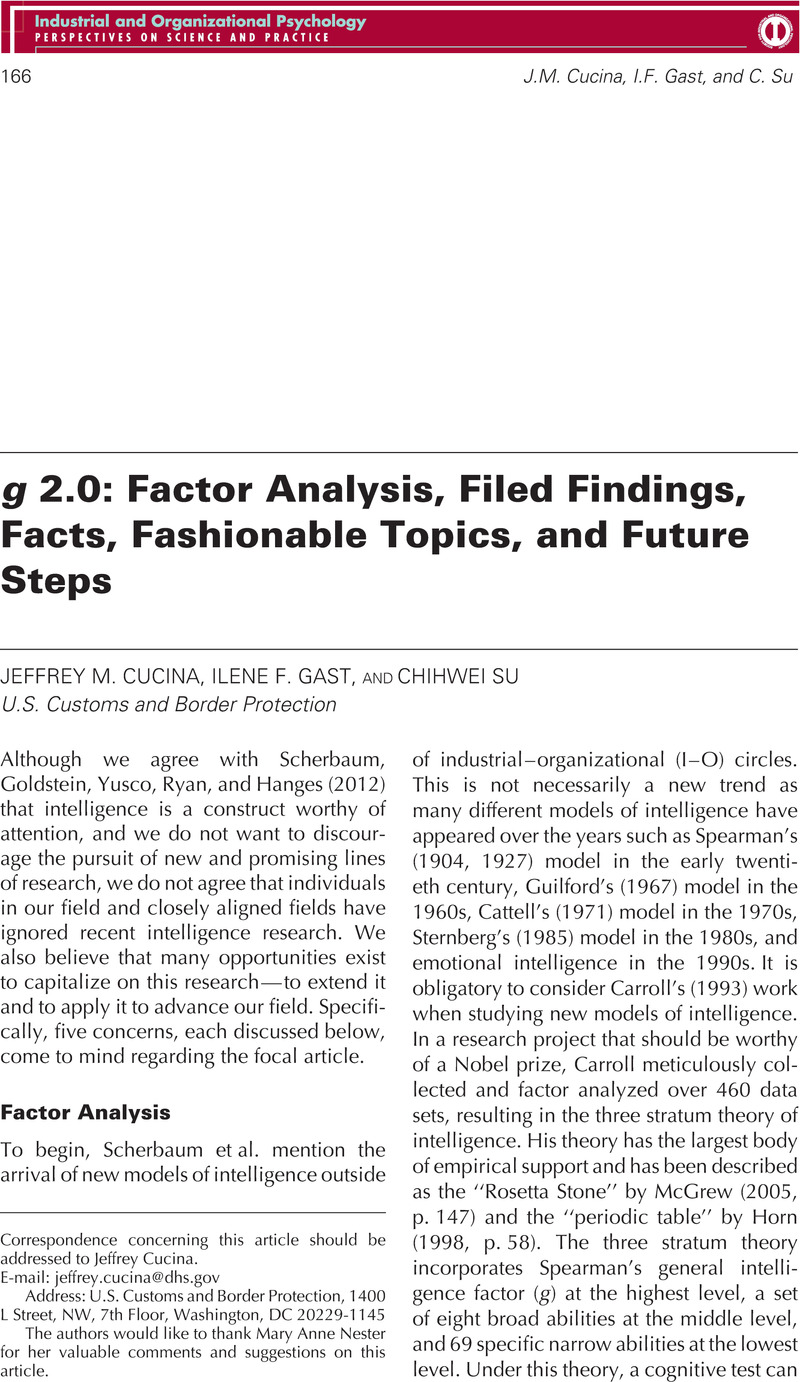Crossref Citations
This article has been cited by the following publications. This list is generated based on data provided by Crossref.
Hanges, Paul J.
Scherbaum, Charles A.
Goldstein, Harold W.
Ryan, Rachel
and
Yusko, Kenneth P.
2012.
I–O Psychology and Intelligence: A Starting Point Established.
Industrial and Organizational Psychology,
Vol. 5,
Issue. 2,
p.
189.





